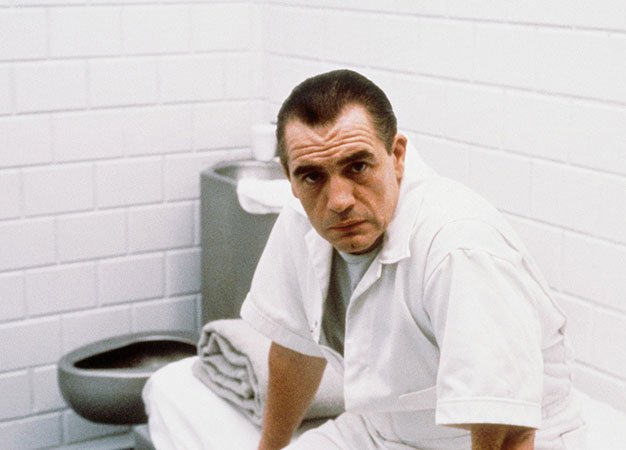
Visual fetishist. Exacting craftsman. Engineer of intensity. Michael Mann is all of these things, able to make a conversation as suspenseful as a shootout. In anticipation of TIFF Cinematheque’s Mann retrospective, Neon Nights, openingThursday (February 5), here are his five most effective scenes.
1. Street fight, Heat (1995)
Career criminal Neil McCauley (Robert De Niro) robs banks. Driven detective Vincent Hanna (Al Pacino) wants to stop him. And in the centrepiece action confrontation of Mann’s masterwork – a stunning gun battle between McCauley’s crew and what appears to be the entire LAPD – we get to see how far these rivals are willing to go to get what they want. It’s a hell of a thing, both for its exceptional construction and for the way it unmasks McCauley and his charming pals (including a lovelorn Val Kilmer and a wisecracking Tom Sizemore) for the violent, amoral thugs they are. After this, there’s no question for whom we’re supposed to be rooting. Two decades later, it’s still one of the most effective action sequences ever committed to celluloid.
2. Dr. Lecktor makes a call, Manhunter (1986)

Yeah, yeah, Anthony Hopkins won an Oscar for playing Hannibal Lecter in The Silence Of The Lambs, and Mads Mikkelsen has made the world’s worst psychotherapist his own in the new TV series. But Brian Cox was the first actor to embody him (rechristened “Lecktor” for some never-explained reason) in Mann’s slick, stylized-as-hell adaptation of Thomas Harris’s Red Dragon. Cox’s detached, alien performance is still the most chilling version of the character, who spends the entire movie in a maximum-security prison and still manages to sic a demented serial killer on FBI profiler Will Graham with a minimum of effort. The scene in which Lecktor obtains Graham’s home address with an inventive telephone strategy is a master class in using distinctive set design, smartly chosen camera angles, perfectly calibrated editing and one hell of a performance to build tension when almost nothing is happening on screen.
3. Everything goes to hell, Collateral (2004)

In the club shootout in Collateral, a brilliant set piece, Tom Cruise’s assassin takes out his targets with shark-like precision in the middle of a panicking crowd. But the most powerful moment happens immediately afterwards, just as Jamie Foxx’s cab driver/hostage, Max, is about to be escorted to safety by Mark Ruffalo’s undercover cop. In an instant, Mann and screenwriter Stuart Beattie upend all our expectations for the movie’s third act – and Foxx’s face in that moment conveys not just Max’s terror but the dawning awareness that if he ever wants to escape this waking nightmare, he’s going to have to save himself. Note: Mann attempts a similar third-act pivot in Blackhat, but it’s not as effective because we just don’t give a crap about the characters.
4. Raising the stakes, The Insider (1999)

A little squirrelly at the best of times, tobacco researcher Jeffrey Wigand (Russell Crowe) grows more and more nervous about his work as a whistle-blower for 60 Minutes producer Lowell Bergman (Al Pacino) over the course of Mann’s bristling true-life drama. But in a bravura sequence, Mann puts us right inside Wigand’s head when, after his wife (Diane Venora) receives a threatening email, he comes home to find a bullet in his mailbox – a simple, effective message that shows us how far Big Tobacco is willing to go to muzzle him. Suddenly this isn’t about ethics or moral outrage it’s about one man putting his life, and the lives of his family, on the line to tell the truth. Whether or not Wigand was paranoid before, they really are out to get him.
5. Let’s talk, Heat (1995)

Never one to give his audience exactly what they expect, Mann cast two of the greatest American actors as adversaries in a three-hour action movie, and kept them apart for almost the whole picture. (De Niro and Pacino had both appeared in The Godfather Part II, but shared no screen time at all as the young Vito Corleone, who would someday father Pacino’s Michael, De Niro appears entirely in flashbacks.) The diner scene in Heat is the only time De Niro and Pacino’s characters get to sit down with one another, and nothing happens they sit, they have coffee, they talk like reasonable men. And much like the Lecktor scene in Manhunter, it’s fraught with so much tension and weight that we’re on the edge of our seats.
normw@nowtoronto.com | @normwilner












